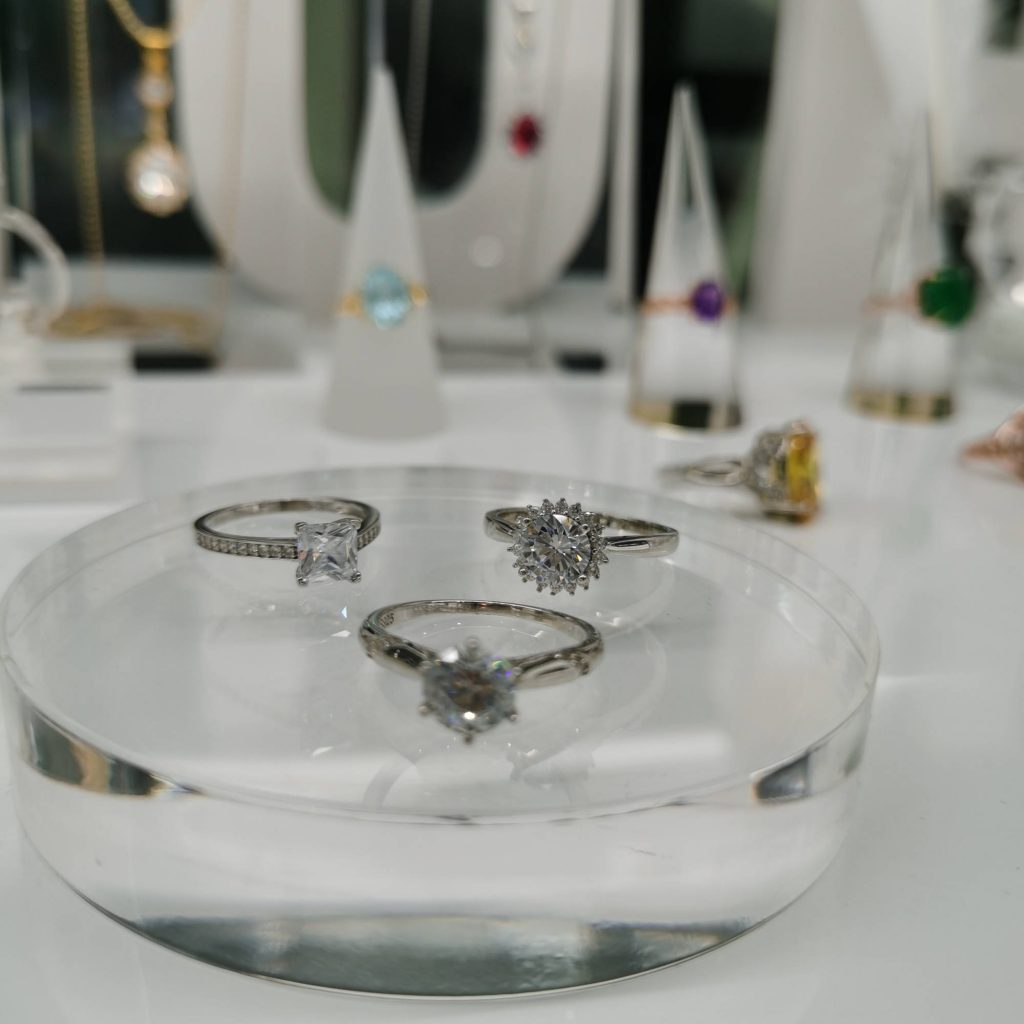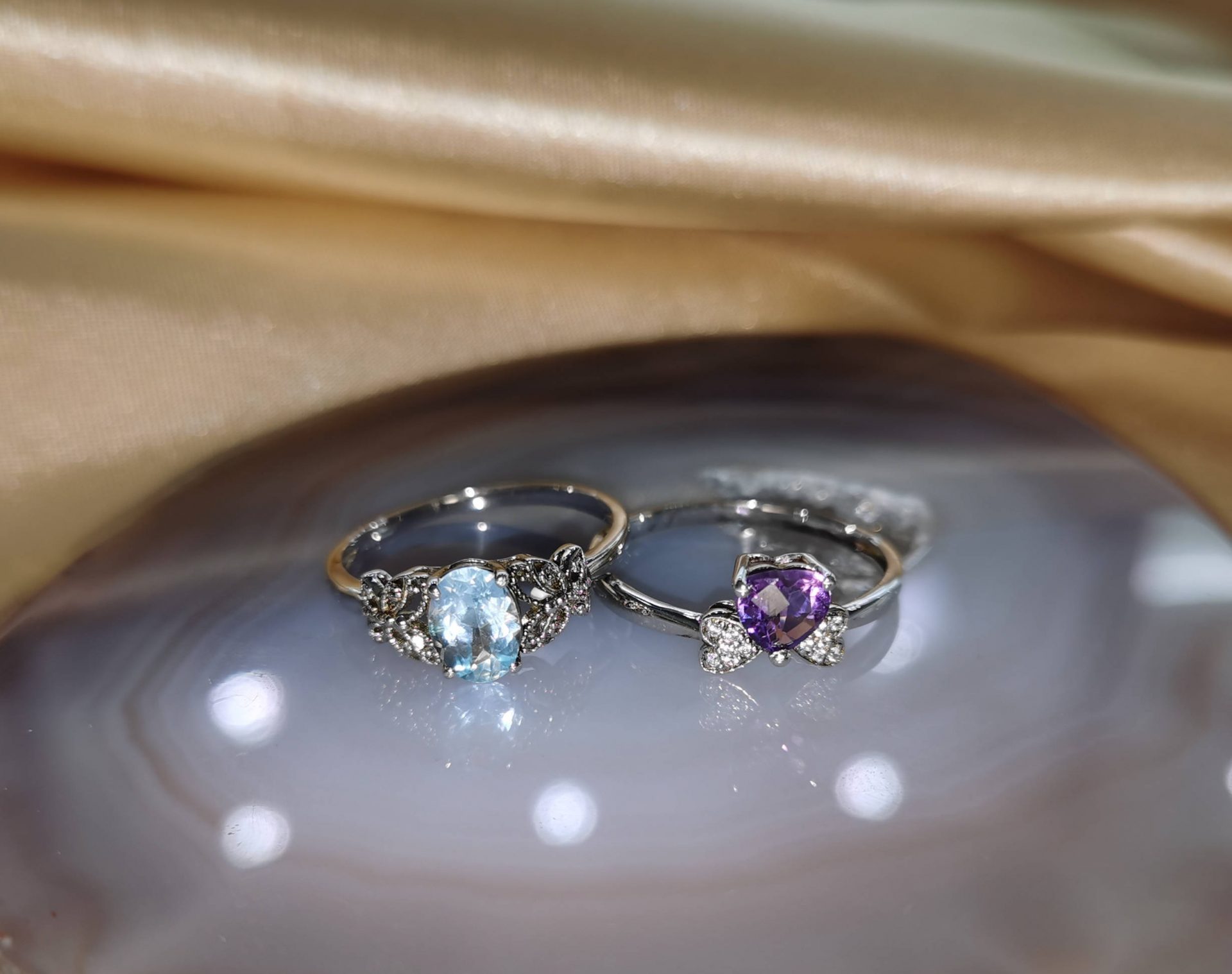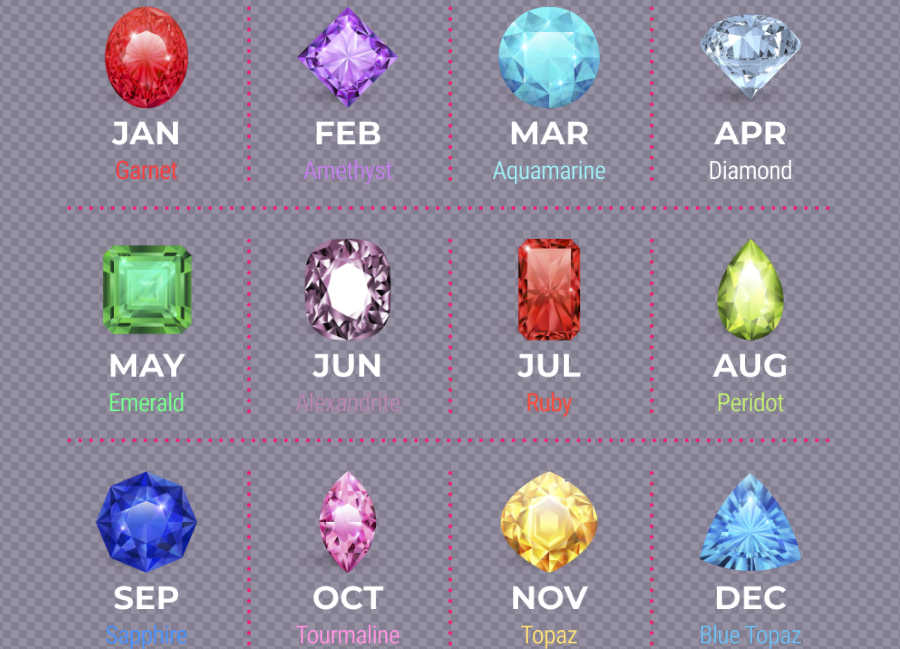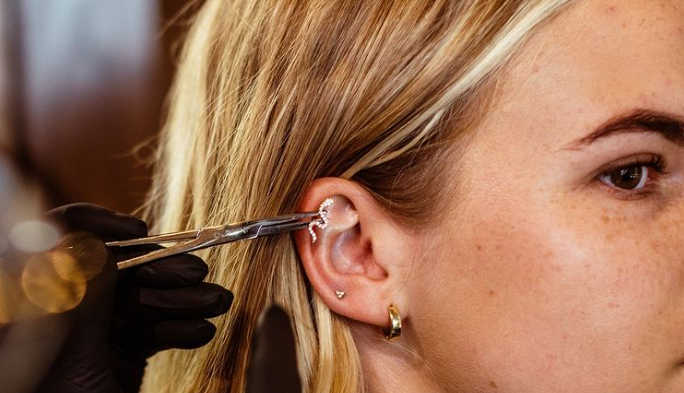WHAT IS RHODIUM?
Let’s clear up what this mysterious rhodium is. Rhodium is a precious metal – like gold, silver, or platinum – only more expensive! In fact, it is the most expensive of all the precious metals. Why is that? Well, because it is very rare in nature, it is only found as a by-product of mining for other metals, such as platinum. This, unfortunately, affects the price of rhodium making it very volatile as its availability is connected to platinum supply and demand.
However, rhodium is a very brittle metal and is not easily shaped or formed. As a result, pure rhodium cannot be made into jewelry. On its own it can easily crack and break somewhat like glass. But when used to plate other jewelry, rhodium enhances the durability of the metal.
BLACK GOLD? BLACK RHODIUM!
Black Gold does not stand on its own as a classification of blended Gold, it can only be derived from plating.
Black Gold is a layman term, this is not an alloy that exists, but because it sounds unique and interesting, many jewelry retailers will erroneously use this term to market black rhodium plated jewelry. The actual classification is Black Rhodium. Its counterpart is White Rhodium, which is used in White Gold plating to achieve a radiant white finishing.
Black rhodium does not appear in nature, but was discovered in a laboratory. Since it is a relatively new choice for jewelers, suppliers creating black rhodium use various different additives. Also note that it is not always black. Most of the time, it is a medium to dark grey and can darken towards black. It depends on what additives the supplier uses in their formula for black rhodium.
The recipes for black rhodium are proprietary and therefore are rarely talked about. It’s a proprietary alloy that combines rhodium with other metals to create a signature gunmetal look. Because it’s a closely guarded commercial secret, it’s hard to determine what exactly goes into the mixture to darken the metal, but a few guesses include ruthenium, tin sulfate, tellurium oxide and arsenic trioxide. Think of it as a recipe that Grandma refuses to hand over.
Black Rhodium plating is more costly than Gold plating as Rhodium is a more valuable metal then Gold due to its rarity. And it is harder to plate which is why many goldsmiths do not work with it.
RHODIUM PLATING
Plating with rhodium, also known as rhodium flashing, is a process that coats a fine layer of rhodium over white gold, platinum, and silver rings to increase their durability and shine.
Before a piece of jewelry can be plated, it needs to be cleaned. Dirt tends to stop rhodium plating from holding in place.
Once the jewelry is clean, it is dipped into a rhodium solution and an electrical charge is used to fuse the rhodium to the base metal, which may be white gold, silver or even yellow gold. It’s important the electric current is just right or the rhodium plating may turn black.
Getting the right thickness of rhodium plating is also important. Most jewelers aim for between 0.75 and 1.0 micros. It sounds quite thin but it’s sufficient for rings, necklaces and other jewelry items that get a lot of wear.
Rhodium flashing is not permanent, and it will wear off in time. The wear time depends on how much the jewelry piece is used and how thick the original plating was.
Re-plating rhodium rings does not take long, and most professional jewelers offer this service.

Rhodium Plating
WHY IS RHODIUM SO GREAT?
While rhodium is too expensive and too brittle to make jewelry out of, it makes an excellent plating material. It is often used to hide imperfections and lend a higher sheen to silver or white gold pieces.
SCRATCH RESISTANT
Being harder than both silver and gold, rhodium plating makes an excellent tough protective coat that shields jewelry from scratches and corrosion. Plus, it doesn’t tarnish!. All rings made with white gold require a plate of rhodium to maintain a bright reflective white color. Rhodium plate increases resistance to surface scratches for white gold and silver rings. When plated the right way, rhodium can increase surface durability on white gold and silver rings.
SAFE TO WEAR
A final benefit of Rhodium is that it makes jewelry hypoallergenic because it’s nickel free. This means you shouldn’t get any nasty rashes or other painful reactions. If you do have a nickel allergy, it’s worth looking into rhodium plating as a solution. Also, rhodium plating is a good recommendation for customers who are allergic to silver, as it will protect them from direct contact.
WEAR OFF EASILY?
Although there are many benefits of rhodium plating, there is a downside – it’s lack of longevity. Rhodium plating is not permanent, and it will wear off in time. The more you wear your jewelry and the more it’s exposed to, the more often it’ll need replating. 2-3 years is considered the norm.
Re-plating rhodium rings does not take long, and most professional jewelers offer this service.
TIPS FOR EXTENDING THE LIFE OF MY RHODIUM PLATED JEWELRY
1.Avoid exposing your ring to harsh chemicals
2.Avoid rubbing off the rhodium plating on your jewelry
3. Take your jewelry off when swimming in heavily chlorinated pools as the chlorine can damage the plating.
4.Wipe it down with a soft cloth after wear.
Like any other plated gold, it will eventually fade away after many years of usage. Regardless, you can always send for plating again. It is worth noting that our designs are resilient to such fading as our design can be further accentuated with the fading over time.
If you’d like more information, you can click here to learn more experience sharing about jewelry. And for more beautiful jewelry collection, visit our store at http://unecklace. com/.

Ten articles before and after
REGIONAL CULTURAL CHARACTERISTICS OF CHRISTMAS
REASONS JEWELRY MAKES US BETTER HUMANS
PROS AND CONS OF STAINLESS STEEL JEWELRY
HOW TO CARE FOR STAINLESS STEEL JEWELRY?
HOW IS JEWELRY MADE? WHAT IS THE PROCESS OF MAKING JEWELRY?
925 silver vs sterling silver vs pure silver: What’s the difference between them?
THE DIFFERENCE BETWEEN 925 SILVER AND TITANIUM STEEL



